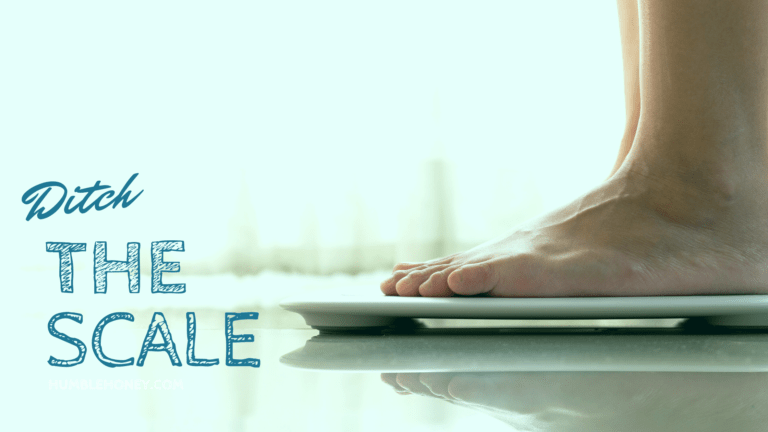Health is much more than a number on the scale
It is important to not stress over the numbers at the tips of your toes

The scale has become ubiquitous with making us feel good, or more often, bad about ourselves. It is the only thing people use to assess their health and wellness on any given day. One of the most common areas of concern for women I work with is the numbers reflected on the scale. I have clients who have made several tremendous health changes in their routine over several months. They have more energy, less bloating, feel better, eat better, and have made exercise a part of their routine. Despite the numerous healthy changes, the scale not moving erases all positive changes towards improved health and wellness. I completely understand this is a struggle, I used to do it myself, but it is important to not stress over the numbers on the scale. Health is much more than one number. Here’s why:
Weight Fluctuations
Weight gain or loss of 1-5 pounds is prevalent daily due to fluid fluctuations. Daily weight changes are affected by the amount of water we drink, the food we eat, the exercise we do, and even shifts with hormones every month. For example, suppose you learn a new strength technique or have a high-intensity workout. In that case, you may be sore—soreness results in inflammation, increasing fluid retention. Similarly, if you eat a high salt food or snack, you could retain extra water for 24-48 hours. For more great insight, listen to this amazing podcast from “Hit Play Not Pause”.
Focus on how you are feeling
Do you feel like you have more energy? Are you less bloated? Can you walk or run further than last week? Focusing on a tangible feeling can help you put health in perspective that it isn’t all about the number.
Is it time to re-set your goals?
What was your original goal weight based upon? If it was from 10-15 years ago, it might be an unrealistic goal. With age comes a lot of change. There is a saying by Betty Friedan “Aging is not lost youth but a new stage of opportunity and strength’. Use this stage of life to see where you can pivot towards a different direction for your health and fitness.
Set realistic goals that YOU control
For example, focus on the number of workouts you did for the week or the new foods you added to your diet. Or, did you learn a new exercise? Were you able to complete something this week that you couldn’t last week? These are all significant parameters to measure for yourself towards better health and wellness.
Genetics!
Genetics is the DNA that we are born with. This information in our cells determines whether we have blue eyes or brown eyes, black hair or blond hair. It also affects our body types and metabolism. Our genetics can determine up to 80% of our body shape and type. While genetics are not to blame for excess overweight and obesity, they affect our body shape, which cannot be changed. Though you can’t change your genetics, we can transform your nutrition and fitness regimes.
Muscle and how it affects the numbers
If you are consistent with an exercise routine, you may notice that your clothes fit better, but the number on the scale doesn’t change. There is the adage that muscle weighs more than fat. This isn’t exactly true, as noted by the dietologist. She explains that muscle weighs the same but takes up less space. Hence, you may have lost a pound of fat but also gained a pound of muscle, which results in no change in weight but improved body composition.
How can I tell if I am improving my composition without a scale?
In one word: measurements! Most of us don’t have access to the tools necessary to measure the body composition of fat versus muscle. However, the next best thing is to measure your waist, thighs, and bust area with a good old-fashioned measuring tape. Taking your measurements is a much better way to deduce changes in body composition. It would be best if you took measurements every four weeks on the same day and time. Here is a great article that tells you how to take the measures for the best results.
To get to the bottom of it, record your food
If you are still struggling with your current routine, it helps to record the food, water, and exercise you complete in a day. An accurate food log is a great tool to spot inconsistencies in time of day, exercise difficulties, energy slumps, or a myriad of other things. It is important to note any stress that occurs in the day, sleep habits or disturbances, and particularly anything that makes nutrition and fitness a struggle to fit in the day. Maybe an oft-neglected old habit surfaces that should be changed.
Permanent health and wellness changes take time
Lastly, remember changes in nutrition and fitness are not a sprint race. It is a marathon! It usually takes a minimum of 3 months to start to notice a difference when you are making long-lasting, sustainable changes in your nutrition and fitness plans. It can take up to 6 months to see significant results. The biggest deal is that you built your results through long-term changes that you can easily implement in your everyday life. It isn’t quite as exciting as a fad diet or instantaneous, but this will get you on a better overall track of health.
